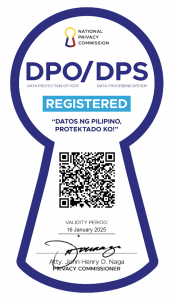By Kristina Noelle S. Andaya | DTI-EMB Knowledge Processing Division
In the Mintel Report by Southeast Asia (SEA) Beauty & Personal Care Associate Director Sharon Kwek Si Ling, facial skin care and color cosmetics will lead the driving categories in the projected 5% growth of the Southeast Asian beauty market from 2020-2021.
According to the market intelligence report, both big companies and local brands are now aware of the needs of the Asian consumers. Beauty product experiences are being redefined and getting more attention from the world through ingredients, marketing, and brand concepts.
Influences, local brand launches, and retail expansion from Japan and Korea, along with fastest-growing markets: Thailand, Indonesia, Vietnam, and the Philippines, have been penetrating a wider spectrum of exports.
Brands should strengthen their e-commerce strategies
Exposure in the digital world is a significant driver of various influences in the multi-dimensional SEA societies. Brands need to beef up their strategies online establishing supply chains and logistical capacity to facilitate operations during normal days and unforeseen circumstances, along with establishing connections with influencers and maximizing the use of social media strategies.
Since the start of the COVID-19 pandemic, live stream shopping gained more attention in the SEA market. With this, small business owners have seized opportunities using this platform for their business expansion. Online shopping is continuously growing and competition on contents in various online channels are boosted.
In Mintel’s report, “this sales model originated from fashion goods and expanded across categories, including beauty. Beauty brands partner with vloggers to promote their products on live streams.”
Once the pandemic is under control, consumers will look for new experiences from physical stores but will also still retain their online shopping habits, or whichever offers a better value.
Taking advantage of emerging SEA markets
Thai beauty brands are rising and the Indonesian market has a strong potential on its halal beauty positioning. The Vietnamese market is also not to be underestimated because it is projected to have high annual growth rates across most beauty categories, especially on their color cosmetics and fragrances.
According to Mintel, brands should understand the cultures and the influence of other cultures within these markets to gain more attention in their prospective markets.
“Culture is a form of identity and community in SEA. Consumers value it and demand that brands reflect it. Consumers* want to feel part of a community; this is even more important in developing SEA markets such as Indonesia (87%), Vietnam (80%), and the Philippines (81%), compared to developed markets like Singapore (63%),” stated in the report.
Hitch on the disruptions of the niche
The social e-commerce can help micro entrepreneurs to look for their specific targets and find out their needs so they could design their products that would meet demands. The recognized winning brands are the ones who represent and differ strategies from how they brand or position themselves in other parts of the world.
“The possibilities are endless with the rise of new ingredients, applications, and technologies in product launches and services. While the world tries to advocate homogeneity of beauty, Southeast Asia has its respective roots embedded in its markets and continues to bring its voice through products and beauty backgrounds that will hopefully one day be a key source of inspiration to the rest of the world,” Mintel noted.
DTI-EMB releases market trends and researches through a digest from Mintel every week. If you want to receive these, please sign up to our mailing list HERE. ♦
Date of relase: 27 September 2020



